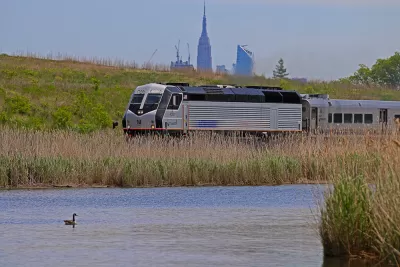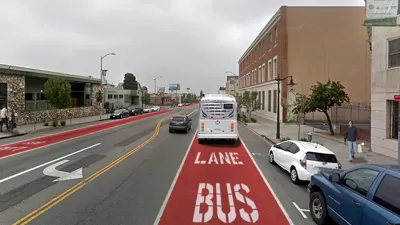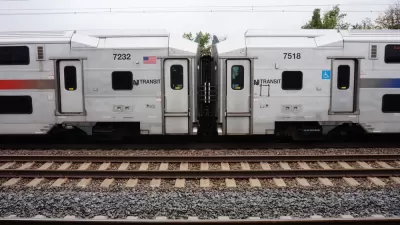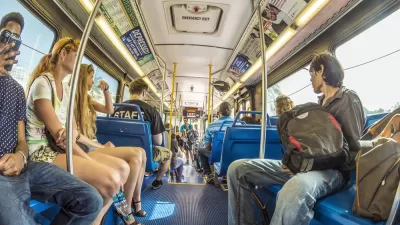U.S. commuter rail systems, primarily designed to bring workers to and from central business districts, must adapt to serve a broader population as the traditional workday changes.

"The future of America’s commuter rail model, including its heavy staff levels, is in doubt because of COVID-19," writes Jake Blumgart in Governing. "U.S. regional rail systems," which "have long been oriented toward suburban white-collar commuters," suffered massive revenue losses as commuting slowed to a trickle. "In the long term, it is projected that remote work will remain much more common, even after the pandemic eases. That means the core demographic for commuter rail could either continue to work from home or only come into the office a few days per week."
To adapt, commuter rail systems have started adding more frequent non-peak hour service and greater frequencies, but agencies are hindered by high labor and infrastructure costs. "One of the biggest is inefficiently allocated labor costs. American commuter rail systems operate on an antiquated model, employing not just engineers who drive the train but multiple conductors who punch tickets and help passengers on from platforms that are (in many cases) much lower than the train doors. For example, the staffing levels on the Berlin S-Bahn, the German capital city’s regional rail network, are about one-third the size of the Long Island Rail Road (America’s busiest commuter rail system), which in turn serves only about a third of the passengers." Other problems include the "antiquated practices" such as inefficient diesel locomotives, "low-level platforms that don’t allow for easy boarding," and a much higher per-kilometer cost than European rail systems.
"But advocates of enhanced service argue that these infrastructural challenges are not as big as transit agencies are claiming. In an era when the federal government has been providing unprecedented support to mass transit and Congress is debating the largest infrastructure spending initiative in modern memory, there may be fiscal room to maneuver."
FULL STORY: Commuter Rail Reform Faces High Labor, Infrastructure Costs

Study: Maui’s Plan to Convert Vacation Rentals to Long-Term Housing Could Cause Nearly $1 Billion Economic Loss
The plan would reduce visitor accommodation by 25,% resulting in 1,900 jobs lost.

North Texas Transit Leaders Tout Benefits of TOD for Growing Region
At a summit focused on transit-oriented development, policymakers discussed how North Texas’ expanded light rail system can serve as a tool for economic growth.

Why Should We Subsidize Public Transportation?
Many public transit agencies face financial stress due to rising costs, declining fare revenue, and declining subsidies. Transit advocates must provide a strong business case for increasing public transit funding.

How to Make US Trains Faster
Changes to boarding platforms and a switch to electric trains could improve U.S. passenger rail service without the added cost of high-speed rail.

Columbia’s Revitalized ‘Loop’ Is a Hub for Local Entrepreneurs
A focus on small businesses is helping a commercial corridor in Columbia, Missouri thrive.

Invasive Insect Threatens Minnesota’s Ash Forests
The Emerald Ash Borer is a rapidly spreading invasive pest threatening Minnesota’s ash trees, and homeowners are encouraged to plant diverse replacement species, avoid moving ash firewood, and monitor for signs of infestation.
Urban Design for Planners 1: Software Tools
This six-course series explores essential urban design concepts using open source software and equips planners with the tools they need to participate fully in the urban design process.
Planning for Universal Design
Learn the tools for implementing Universal Design in planning regulations.
Ascent Environmental
Borough of Carlisle
Institute for Housing and Urban Development Studies (IHS)
City of Grandview
Harvard GSD Executive Education
Toledo-Lucas County Plan Commissions
Salt Lake City
NYU Wagner Graduate School of Public Service





























